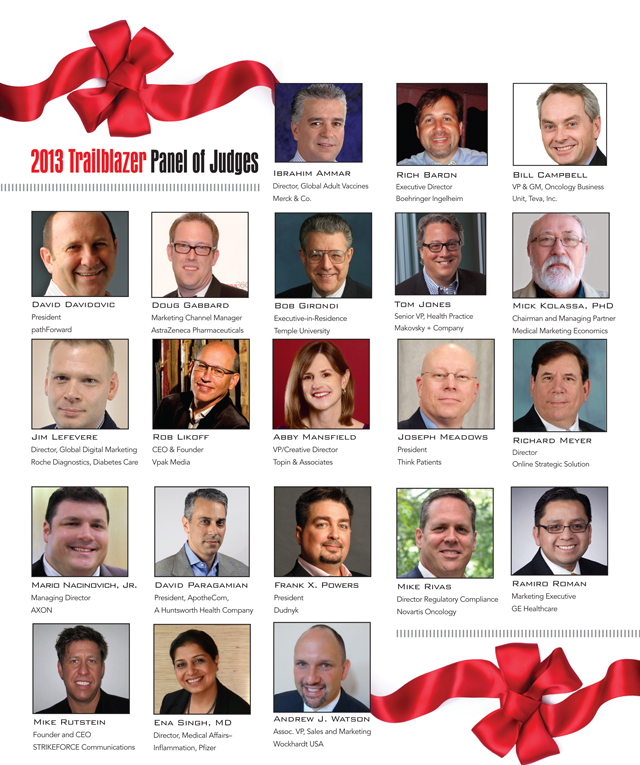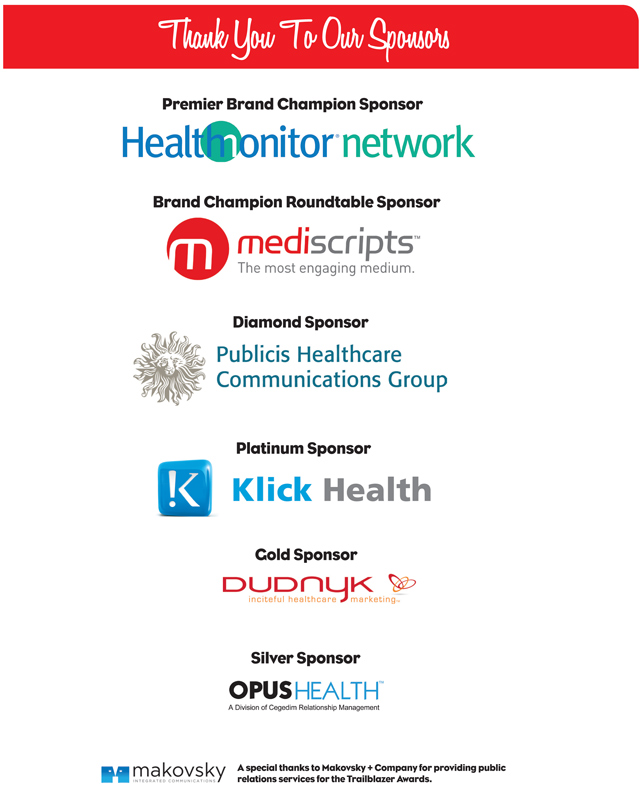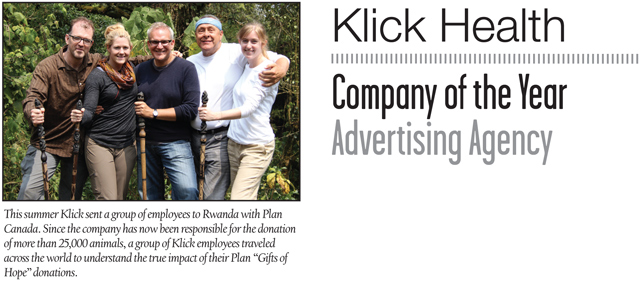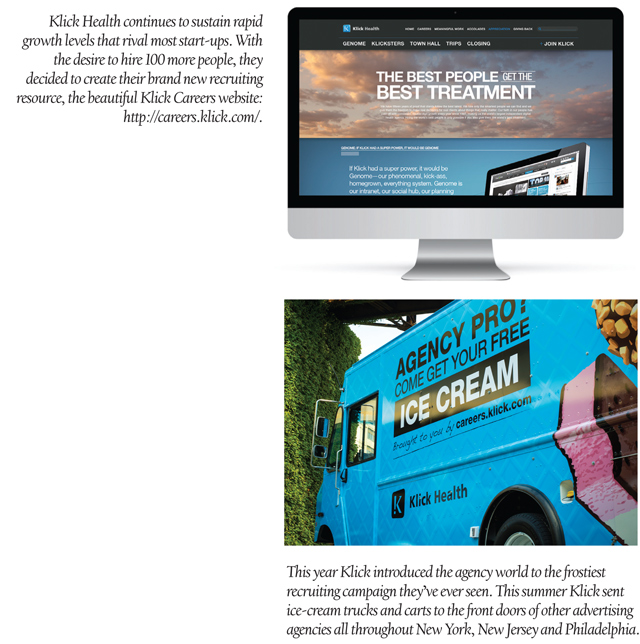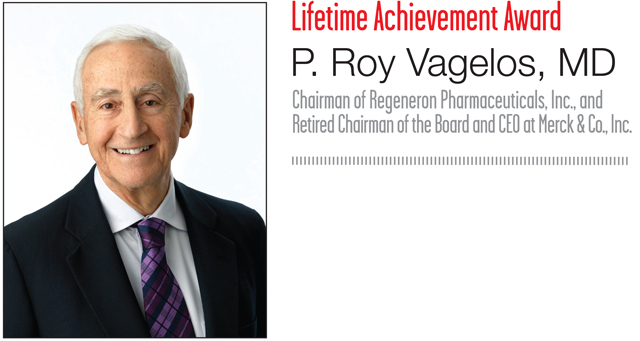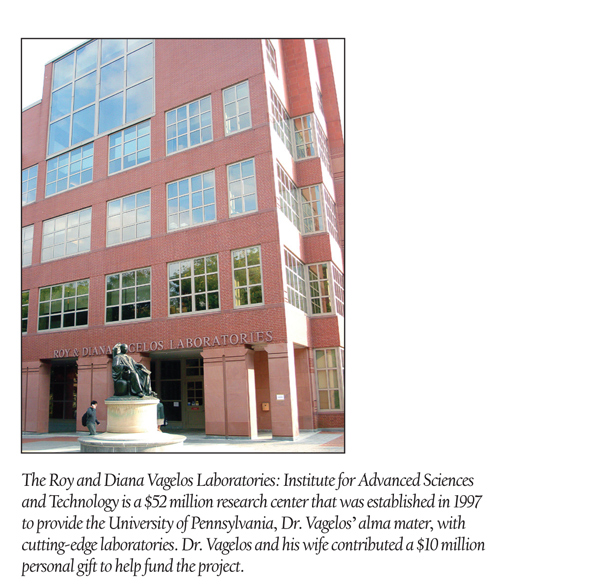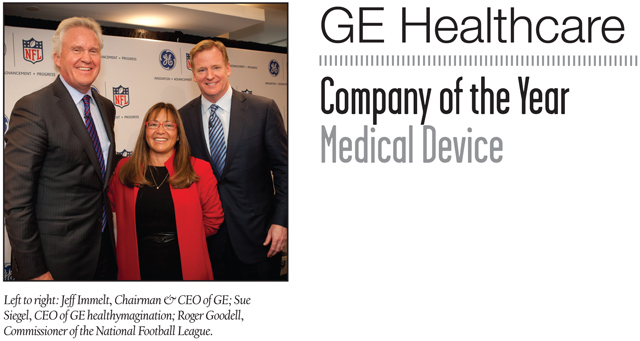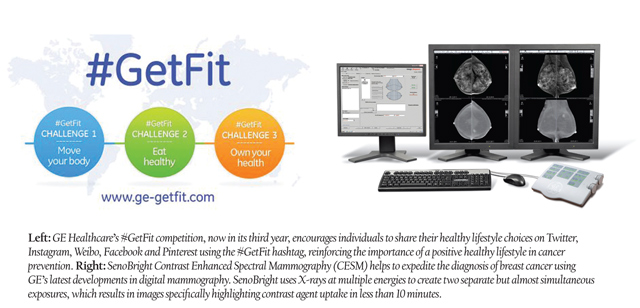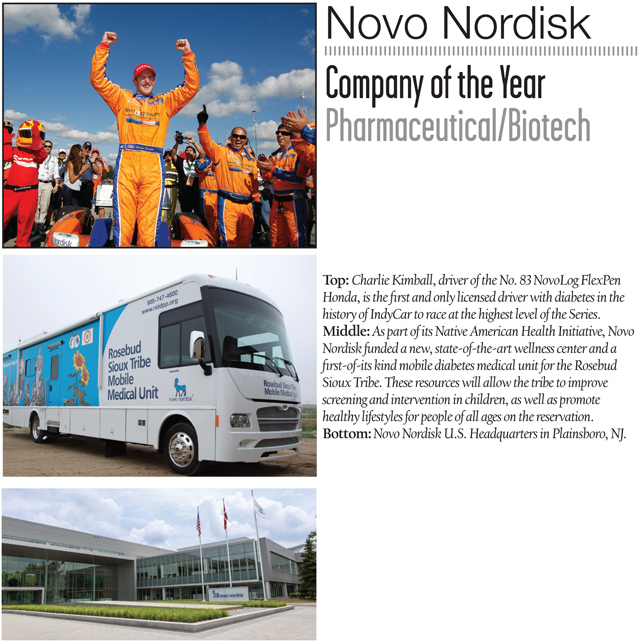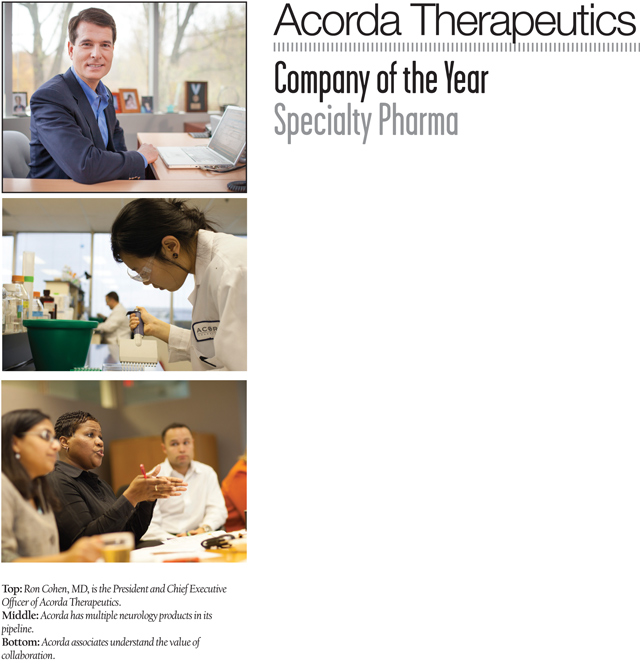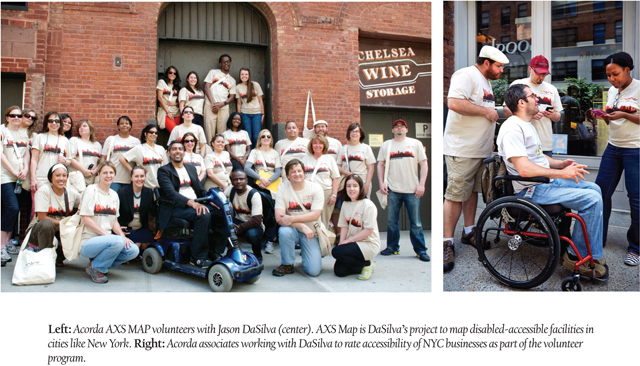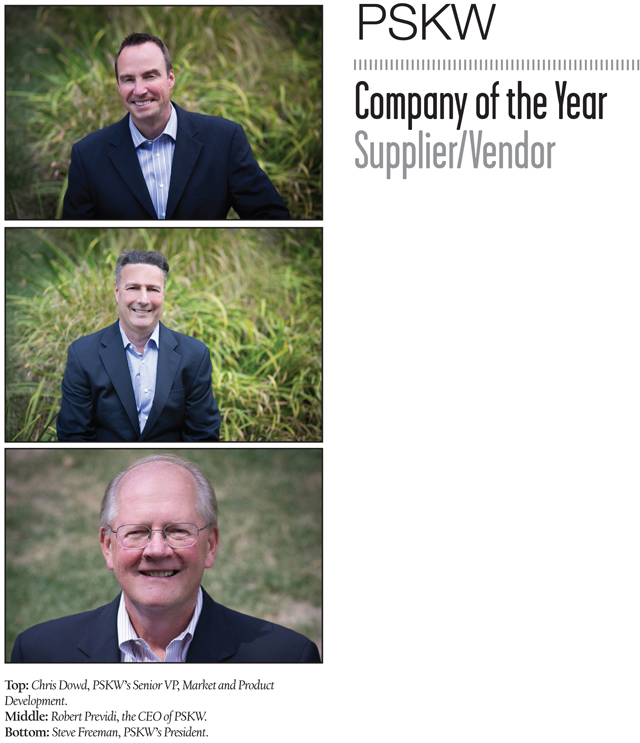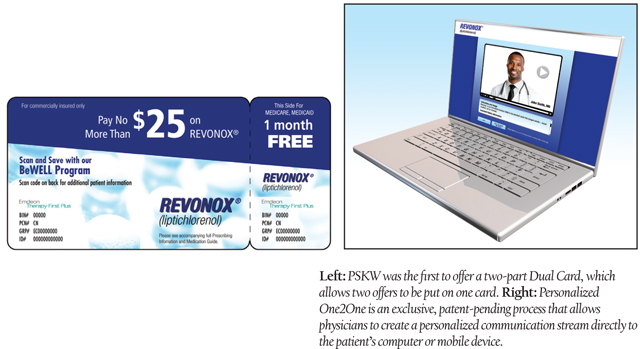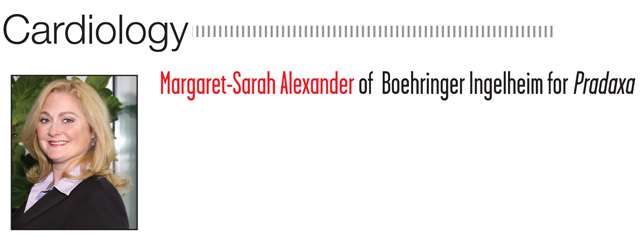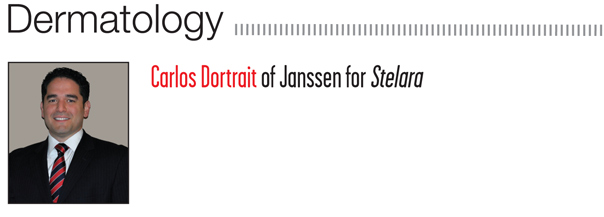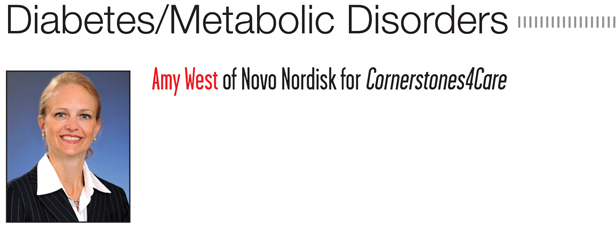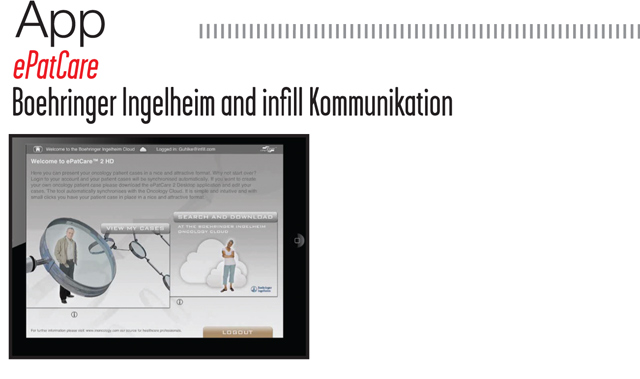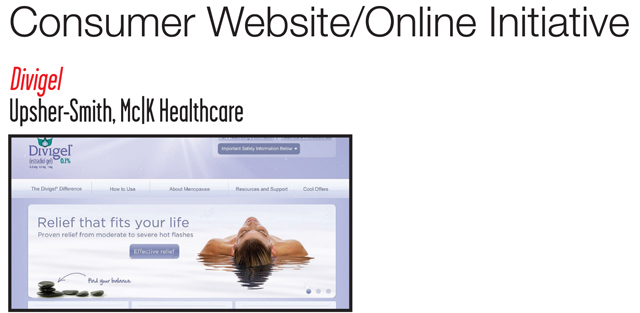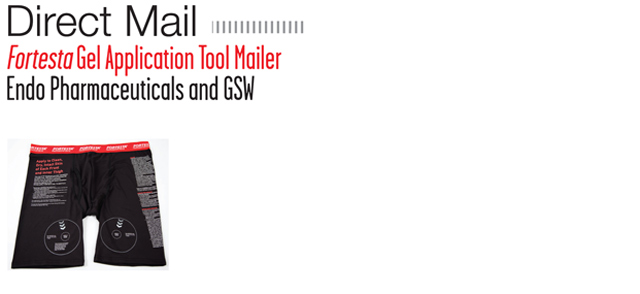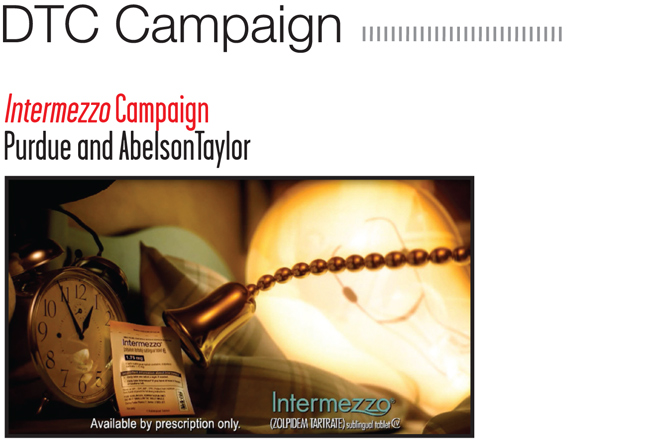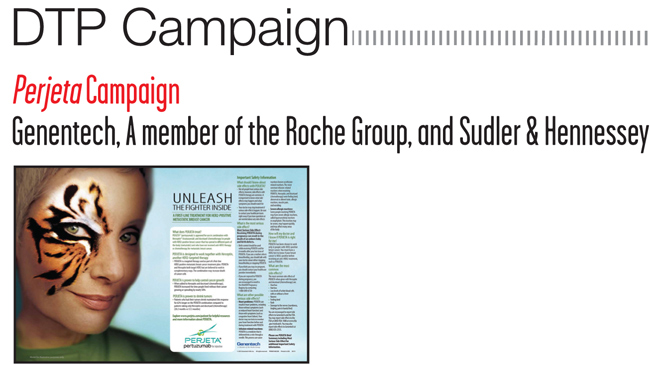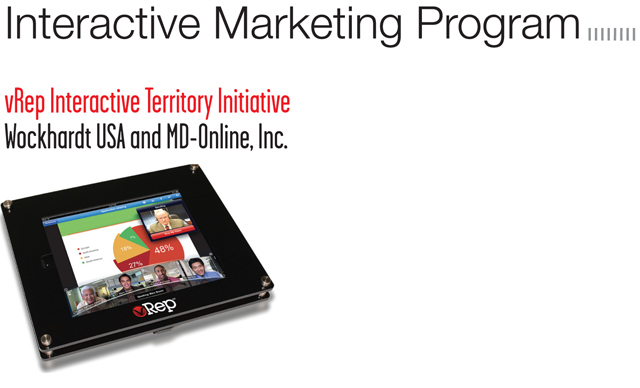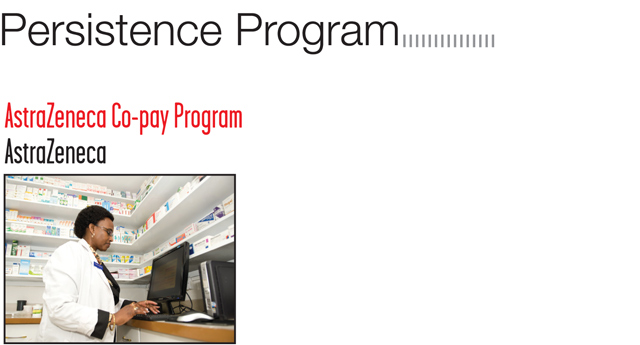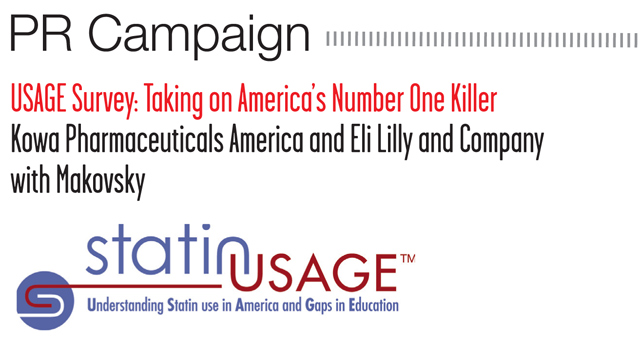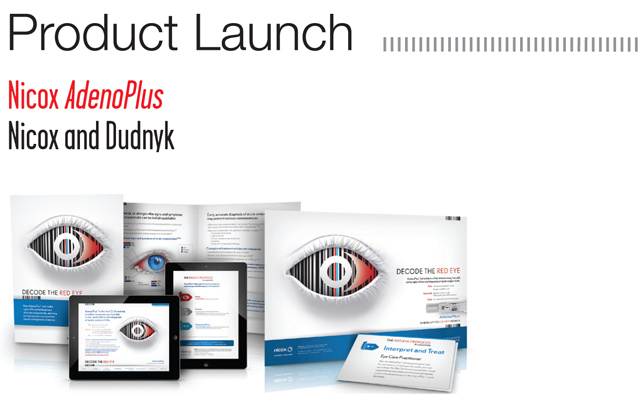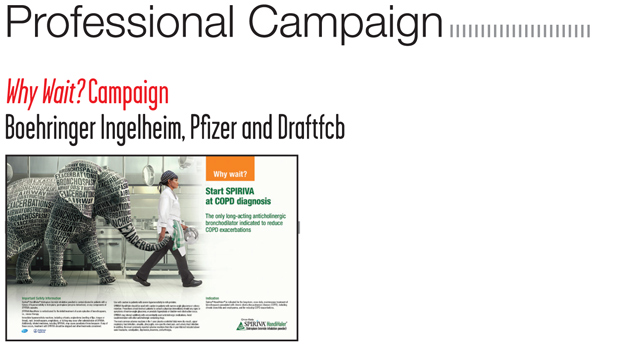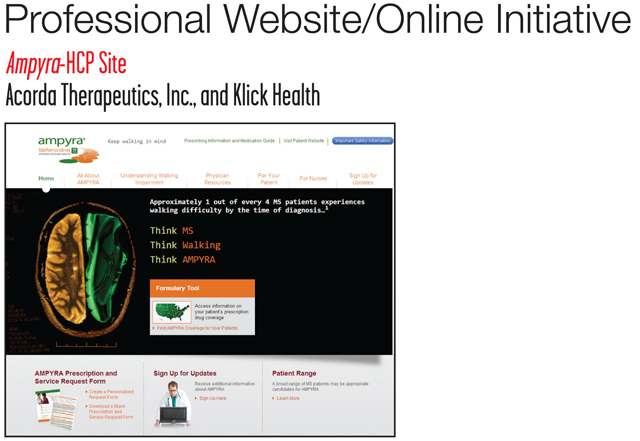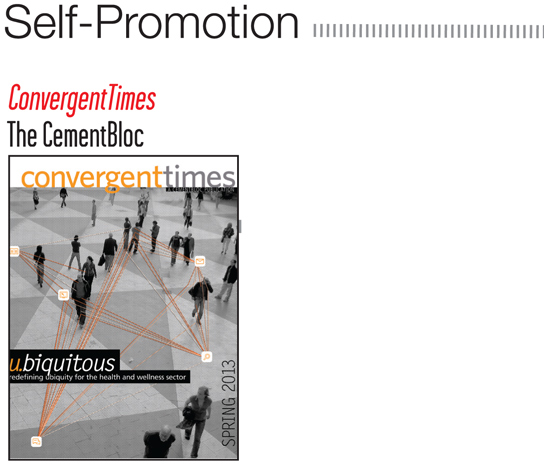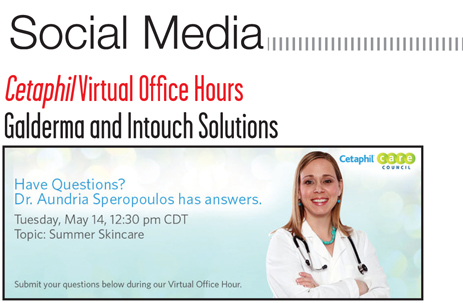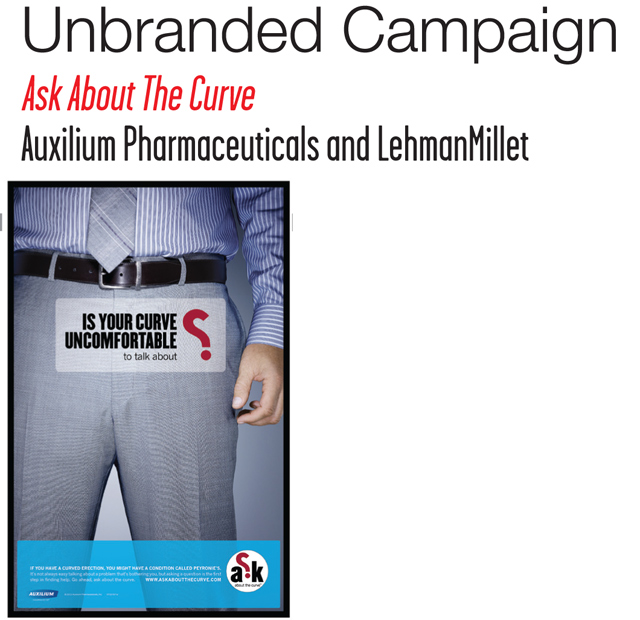PM360 2013 Trailblazer Awards Gala from PM360 Online on Vimeo.
Premier Brand Champion Sponsor
Health Monitor Network is the nation’s leading patient-education company. With a digital and print platform reaching 120,000 doctor offices, 300,000 physicians, 12 million households and 40 million patients, Health Monitor Network’s ROI-driven pharmaceutical marketing programs include targeted advertising, awareness & acquisition, compliance & persistency, lead generation, new product launches, patient education and physician engagement. Trusted by physicians, major medical associations and other healthcare providers, Health Monitor Network’s award-winning media facilitate dialogue between patients and their healthcare professionals to help improve patient outcomes.
Brand Champion Roundtable Sponsor
What medium is more interactive than interactive media? What’s more direct than direct response? MediScripts. MediScripts is the only medium that puts your message right at the center of the physician-patient engagement. MediScripts’ point-of-prescription advertising is the ideal complement to your digital marketing programs. It moves you beyond simple awareness to actual interaction with your audiences. It puts your message in the hands of prescribers on a daily basis, keeping your brand top-of-mind during the doctor-patient dialogue. Marketing teams rely on MediScripts to generate revenue. In over 50 brand-specific IMPACT studies performed by Wolters Kluwer Health, MediScripts on average delivers over a 20:1 return on investment. With a database of more than 150,000 prescribers, MediScripts delivers precise targeting by decile, by specialty and by market. And because it’s a paid subscription service, MediScripts is PhRMA Code compliant. That’s why we’re an approved partner of eight of the 10 largest pharmaceutical companies.
Diamond Sponsor
About Publicis Healthcare Communications Group
Publicis Healthcare Communication Group
(PHCG) is the largest health-oriented agency network in the world. A division of Publicis Groupe, PHCG manages top-tier agencies specializing in promoting innovative solutions in advertising, medical education, sales and marketing, digital, market access, and medical and scientific affairs. PHCG is dedicated to delivering ideas of purpose that compel action, change lives, and amplify business outcomes. With nearly 5,000 employees, PHCG manages 10 agency brands through 58 offices located in 11 countries. PHCG’s global brands are Saatchi & Saatchi Health, Publicis Life Brands, Digitas Health, Razorfish Health, Publicis Healthware International, Publicis Touchpoint Solutions, and Publicis Medical Education Group, as well as strong regional brands.
Web: www.publicishealthcare.com | Facebook: www.facebook.com/publicishealthcare
Platinum Sponsor
Klick Health is the world’s largest independent digital health agency. We are laser focused on creating digital solutions that engage and educate healthcare providers about life-saving treatments. Klick also helps inform and empower patients to manage their health and play a central role in their own care. Every solution hinges on Klick’s in-house expertise across the digital universe—strategy, creative, analytics, instructional design, user experience, relationship marketing, social and mobile. What’s New for 2013: This year we fully established our product development and skunkworks department, Klick Labs. Through the work of this department this year we launch our Dynamic ISI service and our Future15: Katalyst campaign. As we officially cracked the 300 employee count through investing exclusively on organic growth, we are excited for the many developments to come throughout the year.
Gold Sponsor
Dudnyk is a full-service healthcare advertising agency that supports biotech, biopharma, and medical device companies. Respected in the advertising industry for Inciteful Healthcare Marketing, Dudnyk leverages strategic, scientific, and highly creative capabilities to develop branded and unbranded multichannel communications. Dudnyk is the PM360 Advertising Agency of the Year and the winner of Best Professional Campaign from Med Ad News. In addition, the agency was cited by Inc. as one of the nation’s 5000 fastest-growing private companies. Founded in 1993, Dudnyk remains fiercely independent and has offices in Philadelphia, San Diego, and San Francisco. Learn more at dudnyk.comor @DudnykHealth.
Silver Sponsor
The OPUS Health division of Cegedim Relationship Management works with large and specialty Pharmaceutical companies to implement industry leading patient co-pay assistance and medication adherence programs. Our products and services include our innovative IntelliScript co-pay platform along with powerful IntelliScript SmartTools that extend patient reach and establish lasting dialogue to drive medication adherence. We provide non-traditional delivery and engagement technologies such as Mobile, EHR/ePrescribing networks, and HCP/pharmacist outreach programs. All our programs are embedded with actionable Marketing and Sales analytics solutions that prove our industry-leading results. Learn more at www.cegedim.com/copay.
Official Public Relations Agency of the 2013 Trailblazer Awards
Founded in 1979, Makovsky + Company is one of the nation’s leading independent global public relations, investor relations and branding consultancies, specializing in integrated communications programs for the financial, professional services, health, technology and business services sectors. Our tagline, the Power of Specialized Thinking™ underscores the deep knowledge and relevant relationships we bring to client engagements. Our approach has enabled Makovsky to achieve one of the industry’s highest client retention rates: 80 percent. Our specialized focus has drawn not only a certain type of client, but a certain type of professional as well: analytical, entrepreneurial and passionate, with a deep understanding of sector-specific business issues. For more information, please visit: www.makovsky.com.
Klick Health
Advertising Agency of the Year
No, you did not travel back in time when you flipped the page (or clicked on the link). There was no sudden time rift or wormhole. It’s still 2013. Obama is still President. Klick Health just did it again. They utterly blew us away. As the world’s largest independent digital agency focused on the healthcare sector, they just continue to find new ways to amaze us. And they just keep growing at an insane rate—over 30% per year. Which reminds me: You also did not suddenly lose your sanity—at least to my knowledge—Klick Health is just truly deserving of taking home the title of Advertising Agency of the Year for the second year in a row.
A Lesson in Innovation
Klick is constantly pushing boundaries, taking risks and doing everything it can to be as nimble as possible. And in order to become as quick on their toes as they wanted, Klick felt the path to greater efficiency was in eliminating e-mails. Instead, Klick built its own corporate intranet from scratch.
Genome—so named because it is so integral to the company that it is considered to be a part of its DNA—allows employees to message each other. But this is far beyond a simple instant messenger. All work is completed on Genome including tasks, scheduling, communication and even booking vacations. And yet there is even more. It’s social and extremely transparent so anyone can see what someone else is working on at that moment—as well as their performance metrics. And then there is the data. The system compiles tons of information that can be used to help improve the company or just help individual employees. For example, it will automatically connect a new staff member who is just starting a new task with someone who recently completed a similar task. In the end, it makes for a smarter workplace that can just keep getting smarter.
Employee Benefits
In 2012, Klick Academy was created to give employees a full-on eLearning suite that harnessed the knowledge of the more veteran employees. The suite helps develop talent, challenges employees professionally and enhances personal growth. In total, there are over 600 unique videos and SCORMed eCourses, and employees can even like and comment on courses. This helps to create communities of practice in which the learning continues after the course is over. The agency also has a concierge program, which is designed to make the lives of employees a little easier. The concierge spends her time walking around the office to see if someone needs her to order and pick up dinner for them, or take on any errands (even personal ones) that someone just can’t seem to get to. Even if employees don’t take her up on her generous offers, her presence alone helps alleviate stress because employees know she is there if needed.
Client Experience
Seeing opportunity in the unstable agency environment, Klick has doubled down on client experience. They started the year by conducting extensive interviews with current and potential clients to understand where to deepen the quality of their service. That data showed specifically how to build unshakable relationships. It helped inform a number of activities, such as improving delivery speed while maintaining rigor and compliance. Great word of mouth is the world’s most effective marketing and the success of the focus on client experience has been quick and significant. Already in 2013 Klick can trace three new anchor relationships to word of mouth.
Simply, the agency excelled in every area we evaluate while also displaying that “je ne sais quoi” quality that just makes a company stand out from the rest. And in this case, that unnamable quality may actually be time travel, because Klick just seems to operate in a world that is two steps ahead of everyone else.
P. Roy Vagelos, MD
Chairman of Regeneron Pharmaceuticals, Inc., and Retired Chairman of the Board and CEO at Merck & Co., Inc.
When Dr. P. Roy Vagelos was growing up in Rahway, NJ, he spent time working at his family’s luncheonette waiting tables, cleaning up and sweeping the floors. At the time, some of their major clientele were people from Merck, which meant there was a constant slew of chemists, microbiologists and engineers coming and going through the establishment discussing science, medicine and their work—and right there was the young Roy Vagelos picking up on all of it. While he knew then that he wanted to be just like these people, who could have predicted that he would become one of the most successful CEOs that Merck would ever see?
Under his leadership as head of Merck’s Research Division from 1975 to 1985 and then as CEO from 1985 to 1994, the company enjoyed its best years while becoming one of the largest pharma companies in the world. That includes being named the most admired large corporation (among all industries) in America by Fortune magazine for seven years in a row starting in 1986—Dr. Vagelos’ first year as CEO. He also turned Merck into a drug-development machine that focused on creating innovative medicines.
“He knows how to find drugs that prevent disease or save lives,” says Fred Hassan, the Managing Director at Warburg Pincus and last year’s Lifetime Achievement Award recipient. “Today, in drug category after drug category, we see Roy’s imprint. Just look at one category—statins.”
Dr. Vagelos ushered in the current era of preventive cardiovascular medicine with his work in enzyme research, molecular genetics, human trials and the development and marketing of statins. That includes Mevacor (lovastatin) the first statin, or perhaps we can just call it the drug that launched a thousand statins—and that would only be a slight exaggeration.
Dr. Vagelos also made it a priority to find new uses for already established drugs. For example, the company took a medicine designed to kill worms in livestock and dogs and developed Mectizan (ivermectin) as a treatment for onchocerciasis (“river blindness”), which is a devastating disease found in six countries in Latin America, Africa and Yemen and affects millions. Even though this disease is the leading cause of preventable blindness worldwide, there was one problem: The people who most needed the drug could not afford it.
Of course, for Dr. Vagelos the solution was simple—just give it to them for free. In 1987, Dr. Vagelos made the unprecedented decision to make Mectizan available at no cost to all onchocerciasis endemic countries for as long as it is needed. To this day, the Mectizan Donation Program is the longest-running, disease-specific, drug donation program of its kind. In 2012, the 25th anniversary of the program, Merck treated about 200 million people for free. This number increases each year.
“Dr. Vagelos believed in and supported the successful and widely used strategy of empowerment, capacity building and community ownership of the mass distribution of Mectizan with the same passion and faith he displayed as the head of Merck Research Laboratories in guiding and encouraging team work, scientific integrity and ownership of scientific discoveries. He did all of this without expecting or claiming any personal credit,” says Daniel Shungu, one of Dr. Vagelos’ former employees who was inspired to establish the United Front Against Riverblindness (UFAR), a non-profit that aims to eliminate the disease in the Democratic Republic of Congo (DRC).
The Mectizan program wasn’t the only program in which Dr. Vagelos put people before profits. In China, hepatitis B was a widespread problem, so Dr. Vagelos had Merck transfer the technology rights of their hepatitis B vaccine free to the Chinese government and partnered with China’s Ministry of Public Health’s National Vaccine and Serum Institute to build facilities in Beijing and Shenzhen with the capacity to immunize all newborns each year. Today, approximately 95% of Chinese babies receive the vaccine.
PM360 is proud to honor Dr. Vagelos as this year’s Lifetime Achievement Award recipient, because he taught this industry several valuable lessons. He taught us the value of science. He taught us the importance of vision. He taught us what it means to do the right thing—not just for your company, but for the very people we go to work for every day. After all, we are in the business of saving lives and Dr. Vagelos always made sure we never forgot that.
Aurora Archer
Senior Director for Marketing Services, AstraZeneca
Described as a visionary, an expert in digital and a creator of positive change, Aurora Archer was named Senior Director of AstraZeneca’s new Marketing Services organization in 2012. The new group was part of a company re-organization to right-size the workforce for the future state of AstraZeneca’s commercial business and create a new business model.
As Senior Director for Marketing Services, Aurora was charged with delivery of brands assets for all personal and non-personal promotions, digital marketing and innovations, and database marketing and integration. While leading the definition and implementation of the new commercial business model, Aurora began pulling a diverse group of 30 people from around the company together to define multiple newly created roles.
Aurora immediately spotted a great opportunity: By leveraging people’s individual strengths as subject matter experts, she could deliver greater value to the company. And, with this, she saw an opportunity to shift Marketing Services from the “asset delivery” arm of AstraZeneca to a more integral part of its marketing strategy and operations. To do this, Aurora established initiatives to drive greater efficiency and productivity through standardized processes and service benchmarks.
The “core” to any good marketing strategy, Aurora realized, was “how it’s delivered.” And she used this insight to create new tenets for the department. Soon, the Marketing Services’ delivery group adopted the new goals handed down by Aurora. There were three: Accuracy, accountability and faster speed-to-market. Within six months of adopting the new tenets, the error rate in the department dropped from 12% to under 7%.
Aurora accomplished this by implementing work streams to improve speed-to-market timelines for asset development and production. The timelines for email, websites, interactive details, print and banners were reduced on average by 33.4%. And the timeline tweaks continue.
Staying Relevant Through Innovation
Aurora was now ready to implement another part of her vision for AstraZeneca’s new Marketing Services group. And that was to build and deliver best-in-class, customer-centric marketing. Aurora knew she would need to establish strong relationships with the brands to ensure their alignment with her vision. She spent several months collaborating with brand leadership to understand the unique needs of each team, and then worked to ensure her vision would deliver on those needs.
Her vision met with challenges. Aurora instinctively understood the limitation to true innovation created by brand priorities that focus largely on measurable shorter-term impact. But she also strongly believed that staying relevant in the marketplace through effective innovation must go beyond the narrowly defined needs of today to anticipate the broader needs of tomorrow. She embedded this value in the structure of her team by creating “built for purpose” roles. One such role, the Marketing Channel Manager, is specifically designed to leverage individuals with the greatest knowledge and deepest understanding of a channel to drive innovations within that channel. Effectively, Aurora is removing the bias of brand alignment to build an environment that values and drives industry-leading innovations at the enterprise level.
Always focused on innovation, Aurora also began an “Idea Forum,” an open call to internal stakeholders and vendor and agency partners for ideas to solve defined business issues. More than 185 ideas were submitted from AstraZeneca and vendors/partners—further establishing Marketing Services as the group to help identify and deliver on marketing innovation within the company.
Customer-centric Content Strategy
To further drive Aurora’s vision to provide customer-centric marketing, she devised a content strategy and framework that first looks at the needs of customers and then finds or develops the copy to satisfy those needs. Content is placed in the right channels, at the right time to ensure customers receive the most relevant messages for their needs—and move to take an action.
To accomplish this, Aurora met with a number of agencies to understand their approach to content strategy—and chose one vendor partner to help her company develop a disciplined approach to content strategy that could be folded into brand planning and leveraged by multiple brands. That initiative in now being implemented with one of AstraZeneca’s key growth brands.
GE Healthcare
Medical Device Company of the Year
“I find out what the world needs, then I proceed to invent it.” Those are the words of Thomas Edison, founder of General Electric. If he were alive today, he would be proud and maybe even astonished at the intensity with which the company has taken his words to heart. GE Healthcare spends about $1 billion on research and development and introduces 50 to 60 new products every year. It has no less than five major cutting-edge research laboratories around the world, numerous medical advisory boards of hospital administrators and clinicians, and dozens of targeted partnerships. Not to mention the ongoing “healthymagination” initiative, whereby the company committed $6 billion over six years to produce 100 major innovations to lower healthcare costs, increase access and improve quality.
But as Tom Gentile, President and CEO of GE Healthcare’s Healthcare Systems division, recently explained the focus on innovation is not only a matter of continuing a proud tradition, it is also a matter of survival. The rate of change in the global medical equipment market, comprising 80% of GE Healthcare’s R&D budget, is so high that in any given year 25% of the company’s revenue comes from products introduced that same year. The entire portfolio turns over every four years. “If we miss a generation of technology we’ll be out of the market for at least four years,” he said. Truly, GE Healthcare is a company driven to innovate.
How do they do it? They do it by aiming at needed clinical and patient outcomes, not simply at technical advances. And their method is to converge on each outcome from multiple directions at once. Take early breast cancer detection. First, they sponsored an “Open Innovation Challenge” for breast cancer diagnostics, which identified five cutting edge partners out of 500 entries, each with a different research focus. (“We partner constantly,” says Gentile.) Then last year GE’s labs produced SenoBright, a breast imaging system that can often yield a quick decision on an abnormal mammogram without a biopsy. Then followed the acquisition of an automated breast ultrasound screening system—the first ever approved in the U.S.—that increases cancer detection by 35% in women with dense breasts. All this product innovation is supplemented with innovation aimed at mobilizing public awareness and broadening access. They designed #GetFit—an online game and worldwide annual event to motivate people to change lifestyles that increase the risk of breast and other cancers. (You win points by sharing healthy choices online and sticking with them over a six-week period.) They also launched the “Wyoming Women First” initiative, providing a mobile mammography platform for women in rural areas, and through the Open Innovation Challenge, a pilot project to build breast-screening infrastructure in Uganda.
That’s just one illustration. Without going into details, here are three others:
- Better home healthcare for chronic disease sufferers and the elderly, by means of improved portable monitoring and communications technology. That is sustained in part by a joint venture with Intel Corp. and a pilot program in Alberta.
- Better brain imaging, sustained by another Open Innovation Challenge and a $60 million collaboration with the NFL to diagnose often undiagnosed concussions and similar injuries.
- The “Universal Viewer,” introduced last year, integrates patient data from different systems into one sophisticated interface, saving radiologists 2.5 hours a day by eliminating a confusing array of interfaces.
You get the picture: GE Healthcare is not just a Trailblazer; it is Tom Edison’s own offspring. To see more of his offspring, I suggest going to focusforwardfilms.com. There’s no promotion of GE there, but 30 lovely three-minute films commissioned by GE from an impressive roster of award-winning international filmmakers. Each one simply tells a story about an innovator.
Novo Nordisk
Pharmaceutical/Biotech Company of the Year
If all you knew about Novo Nordisk was its phenomenal business success, you’d think the company got where it is by focusing on the bottom line. Indeed, any company with 45 quarters of double-digit growth (and counting) clearly knows a thing or two about the bottom line. But it would be closer to the truth to say that Novo Nordisk achieved this remarkable growth by not focusing exclusively on the bottom line. Or perhaps by having a deeper appreciation than its competitors of the wide range of factors that make for bottom line success.
Beyond the Bottom Line
For one thing, the company conducts business on the “triple bottom line” principle, which measures success by social and environmental impact as well as financial gain. And very well, too, being named the most sustainable company in the world last year by Corporate Knights. The beauty part is that one bottom line supports the other. For example, Corporate Knights reports that in China, Novo Nordisk trained an estimated 55,000 doctors, but because of this and other social investments, it controls over 60% of the country’s insulin market today.
As the world’s leading diabetes company, Novo Nordisk’s wide angle vision also reflects an understanding of what it takes to combat the diabetes pandemic—a holistic approach that targets the entire ecosystem in which the disease flourishes, including healthcare systems, social drivers, government and public awareness. Ask. Screen. Know., their national media campaign to promote early screening and detection, has reached millions. The company’s ongoing national advocacy campaign promotes screening and other patient-friendly legislation. Worldwide, Novo Nordisk is committed to nearly doubling its 23 million diabetes patients by 2020. HCP education is also central. One in 10 U.S. pharmacy students take the company’s electives, shown to reduce patient care costs significantly. A rich variety of patient care and disease awareness initiatives mobilize the public and provide support for patients.
The Art of Patient Engagement
At the heart of the strategy, however, is an unusually intense engagement with patients. This is critical. Most doctors have little time for educating patients about the complexities of good diabetes control, yet living with diabetes demands not only education but daily effort. Novo Nordisk started with an extraordinary series of in-depth studies on all aspects of patient life that have shaped the company’s thinking for many years. Award-winning patient support sites like Cornerstones4Care are one result. Martin Jernigan, Vice President for Victoza, says that live “patient summits” are another tool, one that shaped the current national campaign for blockbuster Victoza. Healthcare professionals say the resulting campaign’s presentation of the product to patients is similar to their own. The campaign also reflects a new marketing policy. Henceforth, all marketing content will feature real patients, not actors.
New ground is also being broken in social media. Ken Inchausti, Director of Media Relations & Corporate Communications, says the company’s social media goal is not only to inform, but also to present points of view. That’s not only the company’s point of view (by retweeting) but those of others who need to be heard. The effect: To create a new and richer social context in which communication occurs. One use of this medium is sharing real-life stories as they unfold over time. When Charlie Kimball became the first driver with diabetes to win an IndyCar race in August, this was part of one such story. The company’s new Rosebud Sioux Tribe Diabetes Prevention Program, which tackles the epidemic in a single community, will become another. Finally, the new communication ecosystem is a place to present what the company is, what it does, and where its commitments lie in a more full-bodied way than ever before. It’s a story worth following.
Acorda Therapeutics
Specialty Pharma Company of the Year
At Acorda Therapeutics, innovation springs from collaboration. Ron Cohen, President and CEO explains it this way: Acorda operated as a “virtual” company during its early years, composed of a dispersed network of scientists, healthcare professionals, patient advocacy groups and business people. “We’ve remained true to our origins as a collaborative enterprise—both within the company and with external partners with whom we share a sense of mission. This unusually high level of teamwork has contributed substantially to our ability to innovate successfully.” Indeed, good collaboration, together with a sense of mission, is a recurrent theme at Acorda.
Innovation, Mission and Collaboration
Cohen founded the company in 1995 with a single vision: To restore neurological function in people with multiple sclerosis (MS), spinal cord injury (SCI) and other nervous system disorders. Acorda’s teamwork first bore fruit with Ampyra, the first therapy to target the walking impairment characteristic of MS. Ampyra sales in 2012 totaled $266 million, a 26% increase over 2011. Acorda now also has seven compounds in the pipeline. Typically, they aim to achieve brand new kinds of therapy, including stimulating repair of the nervous system’s critical myelin sheath, repairing damaged heart muscle and improving mobility in people who have suffered a stroke. Acorda is also pursuing an investigational therapy for spinal cord injury funded in part by the U.S. Army. The company’s investors were rewarded with a gain of over 40% in the past year.
The collaborative culture also explains why Acorda was named one of the best places to work in New York for the third consecutive year by the Best Companies Group, based on feedback from employees about company culture, benefits and job satisfaction. Acorda was ranked second among large companies. The company takes teamwork so seriously that it developed a new intranet with Klick Health, which was named one of the 10 best in the world by the Nielsen Norman Group, leading experts in web usability, early this year. “We needed to develop a tool that would help our associates remain connected to the company’s culture and values, and keep pace with the growing business needs of our organization,” says Cohen. The system’s name, chosen by a company-wide contest is “Synapse”—named after the key structure that allows brain cells to communicate.
Reaching Out Effectively
Acorda’s internal cohesion is matched by its capacity to reach out to patients and partners. Part of this is simple integrity. Last year, the company was named one of Forbes’ 100 Most Trustworthy Companies. But Acorda also has an unusual talent for communicating to professionals and consumers. In the past two years the company collected no less than eight awards from five organizations (including PM360) for its patient websites (ampyra.com and moveoverms.org), its online videos, and its Ampyra marketing campaigns.
The company also reaches out through partnerships with patient support and advocacy organizations including the National Multiple Sclerosis Society and the National Disabilities Institute. Its patient support efforts encompass a wide spectrum of life challenges MS patients encounter—not only the physical ones. They range from much needed “financial wellness” to partnerships with MS patients who inspire by example. Kristie Salerno Kent, an actress and musician forced to give up her performing career due to MS, appears regularly for Acorda at MS events all over the country (see www.dreamstheebook.com). Since her diagnosis she has produced a solo album, Believe, and directed The Show Must Go On, a documentary designed to help others understand what it’s like to have MS (see http://bit.ly/MSdoc). Meanwhile, Ashley Kumlien, with Acorda’s support, is currently running across the U.S. to raise awareness and funds for MS research in honor of her mother (see her at http://bit.ly/MSrun). These women exemplify the Trailblazer spirit. So does Acorda Therapeutics.
PSKW
Supplier/Vendor Company of the Year
The reasons why PSKW was named PM360’s 2013 Trailblazer Supplier/Vendor Company of the Year are unquestionable. First, PSKW is focused on the concept that people are paramount—every aspect of the company’s internal operations and external offerings is motivated by a constant drive to empower people to better themselves. Second, it has built its reputation by focusing on the three crucial pillars: Innovation, Talent Development and Social Responsibility.
People are Paramount: Innovators in Loyalty Marketing
PSKW’s CEO Robert Previdi was one of the first biopharma leaders to recognize the need for effective methods to cut patient co-pays. PSKW created the co-pay assistance market, and co-pay remains the foundation of its business. The company created a compelling list of co-pay “firsts”: The first company to link a financial transaction with the pharmacy adjudication process; the first Coordination-of-Benefits (COB) Card, which delivers incentives to patients cost effectively; the first Adjudicated Debit Card, which enables real-time payment to retail partners; and the first two-part Dual Card, which allows two offers to be put on one card.
But the company’s affinity for patient-centered innovation extends well beyond co-pay initiatives. PSKW has developed a suite of digital relationship tools that help drive loyalty to pharma brands. In fact, one of those breakthrough digital tools—Personalized One2One—was named by PM360 in December 2012 as one of the most innovative products of the year. One2One is an interactive digital program that increases adherence by strengthening patient/brand relationships. Another cutting-edge tool is Engaged Patient, a state-of-the-art patient engagement program that uses more than 80 digital tools to drive adherence: Easy activations, HIPAA opt-ins, notices on filled Rx, co-pay support, appeals process, thank you messages, health advice, refill reminders, refills ordered, and much more.
People are Paramount: Talent Development
In keeping with the company’s core belief that people are paramount, PSKW employs a comprehensive program to attract and retain high-quality employees. PSKW’s commitment to staff development is superior. It seeks to develop and promote from within, requiring that every open position is made available to existing employees prior to recruiting externally. PSKW embraces the Healthcare Businesswomen’s Association (HBA) developmental resources and opportunities. It also uses outside resources for ongoing talent development.
Because of its strong and supportive work environment, PSKW’s staff turnover rate is near zero. While other companies may struggle with constant re-staffing, PSKW continues to deliver steady relationships that result in better communication and higher client ROI.
People are Paramount: Social Responsibility
Since its founding, PSKW has been an out-front leader in meaningful charitable giving. The company provides substantial gifts to numerous organizations that have a profoundly positive impact on the lives of Americans. On a national basis, these include the American Cancer Society, the TASER Foundation for Fallen Officers, and the JED Foundation. PSKW also provides substantial ongoing support to the HBA Metro chapter and supports the New Jersey educational system by sponsoring schools in inner city areas such as Newark.
Work/life balance is an important part of corporate culture. PSKW provides opportunities for employees to work from home, telecommute and to adjust work time to meet family needs. This has created a positive work environment and fostered goodwill and strong relationships. As Previdi puts it, “People stay here because they love the work, they love helping people, and they love their relationships with teammates!”
Beyond these initiatives, the best expression of the idea that people are paramount is PSKW’s raison d’être: To bolster patients’ health by helping them get on therapy and stay on therapy. This calling to improve lives is the ultimate impetus for the company’s work, and PSKW’s robust response to this calling is the basis for their selection as 2013 Supplier/Vendor Company of the Year.
Champions. That’s a strong word, but one that we chose carefully. We needed the right qualifier to describe the kind of people who not only work on a brand but are also a leading reason behind its success. We needed a word that not only could sum up how successful these people are but also how dedicated they are to giving their brands and companies everything they’ve got. And most of all, we needed the perfect word to say how much respect we have for the people who are the lifeblood of this industry and not only keep it going strong but also continue to find ways to push it to new heights.
This year we added two new categories to the group: Managed Markets and Innovation—two areas that are becoming increasingly important in our industry. The winners in these categories have gone beyond their therapeutic areas—they helped shape their company’s overall direction in their respective category. All of our 13 winners found a way to push boundaries. Whether they established successful social media campaigns, created an online experience that catered to their target audience’s disease, took advantage of the endless supply of data to create more targeted campaigns, or pioneered new programs in the EMR space, all of these individuals proved that we couldn’t find a more perfect word to describe them than Champions.
To go right to one of our winners, click on their link below:
Autoimmune: Kaye Kugler of Santarus
Cardiology: Margaret-Sarah Alexander of Boehringer Ingelheim
Central Nervous System: Thomas Flaten of Eisai
Dermatology: Carlos Dortrait of Janssen Biotech
Diabetes/Metabolic Disorders: Amy West of Novo Nordisk
Hematology/Oncology: Robert Greif of rEVO Biologics
Infectious Diseases: Laura Polin of Pfizer
Innovation: Albert Bourla of Pfizer
Medical Device: Lothar Krinke, PhD, of Medronic
Managed Markets: Mark Miller of Allergan
Ophthalmology: Brittany Cassin of ThromboGenics
Pain/Inflammation: Ali Martin of Genentech
Respiratory: Christopher Connolly of Boehringer Ingelheim
Autoimmune
Kaye Kugler of Santarus for Useris
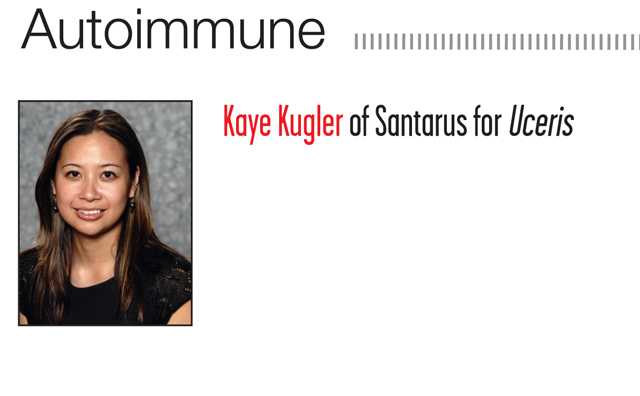
Santarus, Inc., faced several challenges when the company was preparing to launch Uceris (budesonide), an oral tablet for ulcerative colitis (UC), in early 2013. The ulcerative colitis marketplace was already crowded with treatment options that both physicians and patients had become accustomed to due to the lack of innovation in the space.
Despite this, Kaye Kugler, the Senior Product Manager responsible for the drug’s consumer marketing, met these challenges head on. In conjunction with the marketing team, she helped develop and implemented a patient campaign that was built around differentiating Uceris and its advantages.
Kaye constructed a comprehensive DTC campaign that included a dedicated website (Uceris.com) with a plethora of information about Uceris, understanding UC, tips on talking to your doctor (including a guide that was co-created by a Key Opinion Leader), and more. She turned to social media and developed a presence on several social media platforms, as well as other patient-focused websites and programs. She also developed a relationship management program that patients could sign up for on the Uceris website. With the understanding that patient relationship management is especially important to this audience since UC patients are constantly dealing with unexpected flare-ups, she implemented a reminder email program with monthly touch points to keep Uceris top of mind and encourage patients to seek treatment with their physician.
With her ability to navigate roadblocks, implement a sound strategy and thrive in tough environments (both the UC marketplace and social media), Kaye demonstrated everything we look for in a brand champion.
Cardiology
Margaret-Sarah Alexander of Boehringer Ingelheim for Pradaxa
True brand champions never stop. They don’t stop thinking. They don’t stop innovating. They don’t stop trying. And Margaret-Sarah Alexander doesn’t stop. She is always looking for and testing new ways to effectively promote her brand. While finding a new and unique idea is rare enough; the ability to successfully execute this idea is what makes for a true brand champion. Margaret-Sarah has the ability to motivate those around her, lead by example and serve as a visionary for her brand.
Margaret-Sarah treats the people she works with “like a partner, an equal and a friend.” She collaborates with her teams, partners with them to bring ideas to reality and provides outstanding leadership with a clear vision.
And those qualities have helped Margaret-Sarah to become a pioneer within her organization. She was the first person at Boehringer Ingelheim to pilot an EMR promotional program, which earned a nearly immediate share shift for her brand within four months of activity. She also jumped at the chance to pilot a medical journal’s iPad app risk free to the company for the first 60 days. The app gained tremendous traction quickly and drove significant traffic to the brand’s website. She also developed a custom resource center that was designed to integrate educational content with brand-created assets and resources to help HCPs in the management of stroke prevention in atrial fibrillation (SPAF). A SPAF manager tool was particularly popular, having an incredibly high click through rate and an impressive overall ROI of the program.
Margaret-Sarah also proves to be forward-thinking. With increased competition looming on the horizon, she wisely decided to doubled-down on digital presence and secured numerous category-exclusive placements—particularly within the digital landscape—to ensure that her brand would remain top-of-mind. After all, time stops for no one, though it may have a little trouble keeping up with Margaret-Sarah, which is also true of her competition.
Central Nervous System
Thomas Flaten of Eisai for Banzel and Fycompa
Thomas Flaten can be summed up in one word: Fast. Okay, maybe two words would be more appropriate: Really fast. Still not enough for you? Then let’s start at the beginning. Thomas grew up all around the world, traveling across countries and navigating languages to find his way. This helped him to develop an innate ability to always push forward with a passion to learn, understand and engage the world around him. It is also what makes him so fast. He’s quick on the uptake, direct to the point and a speedy driver of goals. Those are the attributes that Eisai most value about him and what makes him a brand champion.
According to John Hosier, Group Director Marketing Primary Care, GI and CNS at Eisai, Thomas is one of the reasons they are well on the way to becoming a top tier epilepsy company. He leads two brand teams: One for Banzel (a product in an orphan disease state for children suffering from Lennox-Gastaut Syndrome) and another for Fycompa (a soon to launch partial-onset seizure product). Not only that, but he leads a marketing team that is only at one-third capacity, which means he must wear the hat of franchise director, brand leader, strategist and tactician. Hosier says that Thomas has hit every financial goal put in front of him while also implementing a lot of “firsts” for Eisai. That is in addition to taking the lead on brand re-positioning, mining creative concept insights from market research and fortifying his brands’ health with his agency partners.
One of our judges sums it up best (though he uses a little more than two words): “Thomas Flaten’s work history and results demonstrate consistent excellence and a willingness to do what is needed for the good of the organization, often under tough conditions—that makes him a trailblazer.”
Dermatology
Carlos Dortrait of Janssen for Stelara
Stelara’s DTC efforts have been nothing less than stellar. An innovative four dose-a-year treatment that helps patients break free from the burdens of psoriasis, Stelara garnered strong sales and market share capture from its competitors. However, the brand was then tasked to deliver similar results with a leaner budget. The team was faced with the question: Even in the face of unmatchable competition budget spend, how do they make their dollars work harder while still outsmarting their competition? The answer: Data.
Carlos Dortrait, Group Product Director at Janssen Biotech, Inc., theorized that if Stelara could target in a more precise and data-driven way, resource allocation could be recalibrated to deliver quantified business return. He knew that the data modeling needed to be sophisticated yet untraditional—something that the competition wouldn’t consider. Carlos created Project “Pharmaball” for Stelara’s market approach.
An innovative local market strategy was developed to profile, group and prioritize media markets for additional consumer and HCP investments, including amplified use of the new Stelara CariDee English TV spot. Rigorous modeling and analytic techniques were applied to segment all DMAs and specifically identify those that had the greatest potential to benefit from increased marketing efforts.
Project “Pharmaball” was a huge success for Stelara. Q4 2012 results showed that Stelara’s rate of growth in test markets was nearly three times the rate of growth in National Markets; it received twice the market share relative to National and Control Markets; and the brand’s ROI grew twice as much from new scrips. Project “Pharmaball” and Carlos were recognized in early 2013 for excellence in research and analytics, winning the esteemed David Ogilvy Award.
Diabetes/Metabolic Disorders
Amy West of Novo Nordisk for Cornerstones4Care
Amy West, Associate Director of Patient Centric Marketing for the diabetes franchise at Novo Nordisk had a vision for their diabetes patient management program, Cornerstones4Care. From the beginning, Amy envisioned a patient-centric program that connects patient unmet needs with technology and data to drive program decision-making and offerings. Amy knew that this would require a departure from the traditional brand-centric marketing approach. Using her leadership and communication abilities, Amy worked diligently to tailor value propositions for internal stakeholders, including the sales force, brand teams, managed markets and senior management.
Amy’s efforts took Novo Nordisk in an exciting, unchartered direction. Program membership grew by an astounding 400,000 plus in 2012, during which time Cornerstones4Care returned a strong ROI via the new patient conversions and increased refills as delivered by the program. Patients also reported that Cornerstones4Care helped them better prepare for their doctor visits and enabled them to better manage their diabetes.
Amy also championed the Lifestyle Companion Tool on Cornerstones4Care.com, an online meal and physical activity planner and tracker. Including a more than 50,000 food database powered by CalorieKing, the Lifestyle Companion provides an extensive recipe library and customizable meal plan and shopping list creators; a robust activity tracker that calculates calories burned; a calendar to track appointments; and the ability to generate and share progress reports with the patient’s healthcare team.
A true brand champion, Amy helped Novo Nordisk successfully shift from a brand-centric philosophy to patient-centric success. To date, her work on Cornerstones4Care has been recognized by companies including Health Industries Research Companies and PricewaterhouseCoopers.
Hematology/Oncology
Robert Greif of rEVO Biologics for ATryn
rEVO Biologics’ ATryn, works to decrease the likelihood of life-threatening blood clots in patients with hereditary Antithrombin (AT) deficiency. Awareness of this orphan condition and of ATryn was minimal. But when Robert Greif joined rEVO Biologics as VP Commercial Operations, he used his passion for helping people and his marketing expertise to radically change the perception of rEVO and ATryn.
Robert re-engineered rEVO’s strategic planning process and go-to-market approach. He replaced the company’s approach to the business with a more collaborative and inclusive strategy that unified the company around a commitment to the customer. Robert focused the communication platform around rEVO’s state-of-the-art technology, built a laser-focused customer database, and employed iPad presentations, apps and other e-tools to enhance customer and sales rep engagement.
Robert then redefined the customer base to include surgeons, anesthesiologists, maternal-fetal medicine specialists (MFM), and blood-bank personnel, and enhanced customer messaging. He launched an app to calculate the savings of switching to ATryn, developed a direct mail/e-mail campaign focused on educating specialists, and instituted a strong advocacy program.
Even with a tight budget, Robert was able to reach and educate potential patients through a TV segment that ran on the Lifetime Network’s The Balancing Act, reaching more than 96 million U.S. households. This first direct-to-patient effort conducted in the category resulted in broad exposure of rEVO and ATryn.
Robert’s efforts resulted in significant change in rEVO’s corporate culture, the growth of ATryn and an increased awareness of rEVO biologics. ATryn’s market share increased greater than 30 points. Compared with 2011, gross sales have increased more than 600% through YTD 2013. Additionally, when ATryn gets reviewed for formulary, it gets approved more than 80% of the time. The judges remarked, “[Robert] appears to have the whole package: He is strategic, inclusive, innovative and able to execute across mediums.”
Infectious Diseases
Laura Polin of Pfizer for Prevnar 13
Since its introduction to the market in 2000 for pediatrics, Prevnar 7 and Prevnar 13 have been widely used vaccines with more than 30 million babies vaccinated. In late December of 2011, Pfizer gained FDA approval for a new adult indication. Although the pediatric indication had excellent use and uptake, at the adult 50 and over launch there were numerous challenges. Specifically, there was a lower sense of urgency in the adult vaccination space. Therefore, the launch team had its work cut out for them.
Laura Polin’s role in personal promotion marketing at launch was particularly crucial, ensuring that the frontline sales force presented the drug in the most effective way possible. As a former field rep herself, Laura understood the importance of hearing from the sales force first hand, “going above and beyond to incorporate their feedback and knowledge” into the campaign. The resulting tactics and messages fit the customers’ needs and were well-understood and enthusiastically received by the sales force.
The resulting campaign was highly customer-centric. Based on careful market research, customers and campaign design were segmented to ensure that messaging fit the type of customer. Reps were enabled via an electronic detailing platform to further customize the presentation for each healthcare professional in order to provide them with the most relevant information possible. Finally, Laura conducted extensive post-launch analysis, analyzing what worked and what didn’t, further fine-tuning the campaign over several months. The result: A firm foundation for a large and growing market.
Innovation
Albert Bourla of Pfizer for the Established Products Business Unit
Historically, pharma companies focused their marketing resources almost exclusively on patented products. Upon patent expiration, or loss-of-exclusivity (LOE), these products were widely considered “lost causes.” However, in recent years, the market dynamics between branded and generic products began to undergo a tectonic shift, with a dramatic increase in generic medicine market share.
Pfizer realized they needed a new, creative approach to post-LOE and generic marketing. So in 2008, they created the Established Products Business Unit (EPBU), the first stand-alone division of a pharmaceutical company to focus primarily on products at the end of their patent lifecycle.
When Albert Bourla took leadership of EPBU in 2010, Lipitor was facing its LOE. Instead of a “lost cause,” Albert saw it as a huge opportunity and shepherded Lipitor through this critical lifecycle phase. Albert’s leadership resulted in a three-fold performance increase over the next best-performing post-LOE brand.
Lipitor’s success brought new thinking to the LOE market and was documented in a seminal study by Harvard Business Review. This article became a virtual roadmap on how to successfully address patent expiration.
How did Albert and his team succeed? While competitors practiced a traditional, centralized approach, he decentralized his EPBU operations. In the LOE world, no two markets operate in the same way; individual regions had unique challenges, so Albert gave them autonomy. Under this structure, each region—North America, Asia-Pacific and Europe—tailored its drug portfolio and approach to fit the needs of its local market.
Albert also gave his professionals the freedom to succeed. His strategy: Encourage them to take measured risks; make quick, informed decisions; accept and learn from failures; and then move forward, applying lessons learned. His paradoxical motto: “Fail fast, learn faster.” Good advice for any Trailblazer.
Managed Markets
Mark Miller of Allergan for HealtheHorizons
Since Allergan has more than 60 years of protecting and preserving human vision, it was a natural progression to offer a care management program to serve at-risk patients and healthcare professionals. But if the care management goal was traditional, the program to achieve it—Mark Miller’s HealtheHorizons program—was not. It was designed to achieve its goal through health plan and managed care partnerships. Health plans have taken on new importance in the healthcare equation recently, partly because the Affordable Care Act ties Medicare insurance carriers’ quality ratings to the quality of preventive services like screenings and education. This means pharma companies and health plans are natural partners when it comes to promoting preventive care. HealtheHorizons was developed to build on that partnership, achieving Allergan’s preventive care goals while building a stronger professional relationship with managed care organizations.
HealtheHorizons accomplishes these goals by offering a rich variety of resources to managed care organizations and through them to allied healthcare providers and patients. Eye care is the central theme currently, but future offerings will extend to other therapeutic categories. Health plans can download the many resources from the HealtheHorizons web portal (www.healthehorizons.com). Some of the tools and applications include an educational video about the debilitating effects of diabetes on vision; gaming apps like VisionCheck designed to alert patients to the need for screening; training programs for case managers, certified diabetes educators and pharmacists; and customizable screening posters, postcards and invitation emails for health plans. The program also provides eye screenings and assists health plans with HEDIS capture and reporting, vital to the Star Quality Rating System that impacts Medicare Advantage bonus payments. In short, Allergan sets a new standard for innovation in the ever-changing healthcare environment and is writing the new textbook on partnering with managed care organizations.
Medical Device
Lothar Krinke, PhD, VP and General Manager Global Deep Brain Stimulation Business, Medtronic (DBS)
Brand champion Lothar Krinke is a leader who has a sense for the practical aspects of building a brand and crafts strategies and tactics around this marketing sensibility. He is systematic and data driven, allowing the facts to drive decisions. Lothar’s passion for marketing, science and patient care has fueled his single-minded mantra: To establish this innovative therapy as essential to care. His background in science enables him to understand and articulate the subtleties of Medtronic DBS Therapy to physicians, patients and caregivers, as well as colleagues.
Creativity—from marketing to concept execution all grounded in deep insights—is also a key strength for Lothar. His proven ability to look beyond the obvious has resulted in an engaging campaign to drive acceptance of Medtronic DBS Therapy as a mainstream treatment choice.
The Refuse to Surrender campaign, showing a patient breaking the pole of a white flag, represents a key insight for the Parkinson’s community: The desire to fight an unrelenting disease. Refuse to Surrender engages patients through an array of innovative touch points: Waiting room commercials, interactive “edu-gaming,” outbound concierge, patient ambassadors, nurse experts and physician-led webinars. Lothar is a leader committed to helping those in need. His activity in community groups and patient advocacy groups reflects his personal commitment to bring Medtronic DBS Therapy to the patients who need it most.
Ophthalmology
Brittany Cassin of ThromboGenics for Jetrea
Readying the market for Jetrea, the first and only treatment for symptomatic Vitreomacular Adhesion (VMA), a vision-threatening condition, was a huge challenge awaiting Brittany Cassin on her first day when she joined ThromboGenics as Product Manager, Access Marketing. With an FDA approval expected only two weeks later, time was of the essence.
Brittany was faced with the primary challenge of ensuring treatment access and developing an effective reimbursement services platform to mitigate the waiting period for a permanent J-code, which was critical for trial and adoption at launch.
Brittany wanted to create a program that was unique to Jetrea and ownable for ThromboGenics. Strategically, the reimbursement platform for Jetrea ultimately needed to be an extension of the company’s mission and values—as well as its emerging role in advancing ophthalmologic care.
In less than three months, Brittany led a team that defined what “care” meant for ThromboGenics. She organized internal and external key stakeholders to shape the vision and gain collective buy-in. Brittany reached out to key practice managers throughout the U.S. who would be impacted by her program to ensure that the brand concept was started with “the end in mind.” Brittany fostered a sense of total team ownership and established a rallying cry for Jetrea CARE: Collaboration in Access & Reimbursement Essentials.
Jetreacare.com was launched in January 2013 for HCPs and their patients. Analysis showed that the forms carousel, coding and billing, and patient sections, which provide VMA patients with financial assistance, were among the most visited pages on the site. The initiative also received positive customer testimonials and feedback from the field.
“Jetrea represents a very innovative approach to ever-changing marketplace needs,” the judges commented. “The fact that it deals with product introduction, reimbursement and company image all at the same time is a credit to those responsible for its development.”
Pain/Inflammation
Ali Martin of Genentech for Actemra
Using technology to enhance the lives of patients, Ali Martin has proven herself as a leading innovator—and a brand champion. With a deep understanding of the mobility and dexterity issues people with Rheumatoid Arthritis (RA) face, Ali became the key client and key decision maker for the 2012 Launch of ACTEMRA.com, in which she successfully leveraged her digital insights and expertise to create a site for patients who suffer from moderate to severe RA.
Ali understood that while many people use the web for researching their medical conditions, people with RA often have a harder time—and a sub-optimal experience—due to dexterity issues. In fact, many RA sufferers might not be able to get the information they need to understand their condition or medications. The goal of the site: To encourage people with RA or RA symptoms to talk to their doctors and about whether Actemra might be right for them could literally be out of reach for some sufferers.
Ali and her team went to work to ensure that the latest advances in web design were used to create a site that was more accessible for people living with RA. Using the latest responsive web design (RWD) technology, which allows users to have an optimal experience on any device, Ali and her team made sure that people with RA would be able to navigate the site. Navigation on the site was optimized to improve user-pathing and help patients quickly learn about Actemra. Some of the more common sense—and vastly helpful—design elements also included larger call-outs and easy-to-click tabs.
By giving people with RA the best possible website experience, Ali proved both her strong leadership within the company and her dedication to patients. And it has paid off. From the re-launch in November 2012 through June of this year, total website visits increased 37% and visits from mobile devices increased by 100%.
Respiratory
Christopher Connolly of Boehringer Ingleheim for Combivent Respimat
Christopher Connolly faced a crowded market that was wary of change when he took on the job of primary brand lead for the launch of the COPD medication Combivent Respimat. His main goal was to get the new medication and inhalers into the hands of those who needed them most. But to achieve that goal, he had to convince reluctant patients to give up their trusted inhaler—Combivent MDI. This was no easy task.
Combivent Respimat combines two medications, so patients can achieve greater breathing capacity than they could with either medication alone. And the Respimat inhaler has patient-friendly features such as a dose counter. So Chris knew that Combivent Respimat could improve the lives of COPD patients—a cause to which he is greatly committed. So he led the pre-launch analysis to select the ideal target audience, channels and messaging with which to reach these populations, effectively collaborating with internal stakeholders and external contractors to determine the plan of action.
He quickly learned that hands-on demonstration and detailed instructions for use were important in both sales rep detailing and in non-personal promotion. Physicians and pharmacists needed to feel confident in their own use of the inhaler before prescribing to patients.
Chris addressed these concerns by providing demonstration kits to practices and pharmacies. He called for updating on Combivent MDI’s packages to include a specific discontinuation date, to address the need for a smooth transition from MDI to Combivent Respimat. And the launch of Combivent Respimat ultimately became a great success, with more than 70% of pharmacies stocked with the new product prior to launch.
During the launch, Chris not only gained the respect of his team members but also proved to be a keen strategist and effective manager, capable of flawlessly integrating diverse and cross-functional teams into a cohesive and highly successful unit.
The PM360 Trailblazer Initiative Awards recognize outstanding healthcare marketing and public relations campaigns in 15 categories that range from traditional advertising (such as direct mail) to some of the latest additions to the marketing mix (apps and social media). Each year, we assess the strategy, planning and execution of the programs and the challenges and budgetary constraints that the marketers had to overcome.
This year’s winners demonstrated innovative and effective techniques for solving a host of challenges and delivering their brand message, including breaking with the stereotypical breast cancer campaign strategy showing warm, feminine and pink images and giving women something they can really rally around; finding a way to successfully and safely engage in real-time conversations with patients on social media; and reinvigorating a brand by applying a patient-centric strategy to eventually capture the top market share in its category.
And there are plenty of more stories like that. All of our winners displayed groundbreaking ideas and a general passion for their work and, more importantly, a passion for improving the lives of the people who could benefit from their brands. These innovators deserve to be recognized as Trailblazers.
To go right to one of our winners, click on their link below:
CONSUMER WEBSITE/ONLINE INITIATIVE
INTERACTIVE MARKETING CAMPAIGN
PROFESSIONAL WEBSITE/ONLINE INITIATIVE
App
ePatCare
Boehringer Ingelheim and infill Kommunikation
Oncology is a complicated, rapidly changing field of medicine. One of the most effective methods of communicating new information is through patient case presentations. Boehringer Ingelheim needed to find new and innovative ways to present patient cases. Market research showed that oncologists wanted a go-to tool that is not only conducive to learning and communication, but also caters to their busy, on-the-go lifestyles. To fill this need, infill Kommunikation, developed ePatCare for Boehringer Ingelheim, an educational iPad and desktop app, and launched it in June 2012 on inOncology.com. The goal was simple: Improve patient treatment outcomes by facilitating communication between oncologists and trainees.
During ePatCare’s development, feedback from KOLs worldwide ensured maximum usability and value for the community. This resulted in an interactive patient case app providing full documentation of all relevant patient history—including all test results and imagery—consolidated into one convenient location. Interactive questions allow the user to compare their answers with those of the expert author. ePatCare includes intuitive touch functions: Panning, swiping, pinching and image enlargement—all at the fingertips.
Since launch, there have been over 3,000 downloads of ePatCare from inOncology.com. By popular demand, an ePatCare patient case library authored by oncology experts was also launched. Despite challenges with distributing ePatCare to a small oncologist community, it has drawn the attention of the large international oncology societies, such as the European Society for Medical Oncology and the European School of Oncology, who are actively promoting ePatCare patient case libraries to their members. It’s predicted that thousands more will be downloaded following these promotions in 2013. ePatCare is not only trendy and functional, but also cost effective and a value-add to the oncology community.
Consumer Website/Online Initiative
Divigel
Upsher-Smith, Mc|K Healthcare
Divigel, an estradiol gel for the treatment of moderate to severe menopause-related hot flashes, was an established brand with strong data to back up its claims, but was stagnating in the marketplace. Despite the best efforts of the sales and marketing teams, Divigel struggled to create an impression among physicians. Upsher-Smith and Mc|K Healthcare realized that even if the product features that set Divigel apart were irrelevant to physicians, they were still beneficial to patients. In fact, patients were actively searching for help, but their needs weren’t being addressed. They decided to shift the primary focus to a target audience of patients rather than prescribers.
Their strategy was to rebrand Divigel to patients who would find features like once-daily gel application, plant-derived ingredients, and individually pre-measured dosing desirable. They created an upscale, personal brand by associating the product with acts of self care and relaxation—luxurious white bathrobes, clear ripples of water, Zen-like stones, and other peaceful, spa-like imagery and language. This refreshed brand identity was integrated into a completely new online patient experience. An unbranded banner ad campaign was thoughtfully placed on a relevant network of websites, and unbranded text ads ran on Google. These drivers led to a new patient website that encouraged visitors to register for the Divigel nurturing program. Registration included monthly newsletters, personalized touch point emails, and access to coupons and samples. The brand’s cool, relaxing imagery and language was prominently featured in all patient communications.
Thus far, results have been promising. After eight weeks, the average visitor-to-opt-in conversion rate was an impressive 16% (compared to the estimated average rate of 3% to 15%). Open rates for nurturing program emails were also strong at 37%, with an average click-through rate of 35%. Most importantly, new sales data confirm that Divigel has the No. 1 market share among direct competitors.
Direct Mail
Fortesta Gel Application Tool Mailer
Endo Pharmaceuticals and GSW
Among topical testosterone replacement therapies (TRTs), Fortesta Gel was being significantly outspent by its competitors. Fortesta Gel’s developer, Endo Pharmaceuticals needed to refocus its strategy to raise awareness among key targets and reinforce the importance of its value proposition—the “most simple patient experience.” A hyper-targeting strategy was developed to ensure that messages resonated and achieved a high share of voice. However, ethnographic behavior and direct rep-ride observation revealed that Endo’s target audience was not accurately differentiating TRTs with regard to their correct application area—the front and inner thighs. While the application site may seem to be an unimportant detail, it is actually a key differentiator and integral to the positioning of Fortesta Gel.
A direct mail piece was created to address this confusion and heighten awareness of Fortesta Gel. With a budget of only 250K, Endo and GSW sought to create an impossible-to-ignore direct mailing with an educational benefit that would communicate the correct application area. Boxers as an educational tool were immediately recognized as memorable, surprising, thought provoking and ownable in the market. A cross-functional team helped to bring the idea to life through many challenges—from initial design, through approvals, to manufacturing and fulfillment.
The Fortesta Gel Educational Tool (boxers) launched in January of 2013. A month-over-month increase of 64% in total prescriptions was observed. By March, total prescriptions were sustained at 70%. Though this piece wasn’t the sole factor for driving the increase in sales, anecdotal evidence from sales rep feedback and social media mining have shown this direct mailer was successful in increasing awareness and conversation about Fortesta Gel.
DTC Campaign
Intermezzo Campaign
Purdue and AbelsonTaylor
Since 2009, AbelsonTaylor has been the agency of record for Intermezzo, promoted by Purdue Pharmaceuticals. Unlike other FDA-approved prescription sleep aid medications, Intermezzo is not taken before bed, but only when needed—in the middle of the night when patients have at least four hours left to sleep. This unique indication and dosing sets Intermezzo apart.
After determining the target market—middle-aged women—AT developed and tested creative concepts. Their strategic goals: To clearly illustrate the frustration felt by those suffering from middle-of-the-night insomnia; cut through the clutter of the competition and the mindset that sleeping pills have to be taken at bedtime; let the sufferer know there is a sleep aid that’s just right for them that gives them control; showcase how quickly the product works and that the sublingual tablet does not require getting up for water.
Creative Solution
The creative campaign had to be fresh and cut through the clutter of the sleep market, illustrating the problem of waking up and being unable to fall back to sleep. The commercial features a light bulb peacefully asleep in the middle of the night. It wakes up and clearly illustrates the frustration patients feel when they can’t get back to sleep. But then the light bulb remembers it has Intermezzo—and takes it. It lays its head on its pillow and falls back to sleep.
After launching the campaign to HCPs in February, the consumer campaign began in November 2012 and ran from January 2013 through the end of March. Results: The consumer campaign was greeted with much success. During the commercial run, scrips rose by 33% compared to the three months prior to airing the commercial.
DTP Campaign
Perjeta Campaign
Genentech, A member of the Roche Group, and Sudler & Hennessey
Empowering women with HER2+ metastatic cancer who have been prescribed Perjeta to embrace treatment and comply with the therapeutic regimen for the full course of treatment was the goal of the Perjeta launch. The therapy is prescribed until disease returns—an average of 18.5 months in clinical trials (six months longer than the current standard of care at the time). Typically, patients who believe drugs are helping are more likely to persevere through side effects—and advocate for reimbursement coverage. Importantly, this work was developed in advance of data proving that women on therapy lived longer than with existing regimens. To drive positive buzz, patients were encouraged to become Perjeta champions with others in support groups or online message boards. The target audience was women who were prescribed Perjeta—yet the campaign needed to work for all women diagnosed with this disease.
Creative Strategy
After the devastation of initial diagnosis, these women are filled with resilience and desire to do everything to fight their disease. Much patient communication in the breast cancer category is warm and feminine, filled with pink or lavender colors. The strategy for Perjeta was to break with these stereotypes and deliver a brand image that matched the fighting spirit of these women. The headline, “Unleash The Fighter Inside” encourages women to continue the fight. The image shows a new survivor wearing the war paint of a tiger around her eye. It conveys confidence, wisdom, strength and a fighting spirit.
The campaign hit doctors’ offices in October 2012 and patient journals in April 2013, targeting approximately 8,000 patients. By the end of the first year, product sales were ahead of internal expectations (approximately 115% to sales goal).
Interactive Marketing Program
vRep Interactive Territory Initiative
Wockhardt USA and MD-Online, Inc.
Wockhardt USA faced the challenge of educating the marketplace about the many benefits of Bromfed DM Cough Syrup. Andrew J. Watson, the Associate VP of Sales & Marketing, knew this: Many of his customers were in areas he could not justify having a “feet-on-the-street rep.” Even so, he had to reach these un-called on HCPs with fresh, relevant data. Andrew came up with an innovative plan: Implement the vRep Virtual Territory Program.
vRep is a groundbreaking program that allows a pharma rep to demonstrate the latest product information without disturbing a busy medical office. Leveraging the latest technology, vReps can communicate with difficult-to-reach HCPs and those who do not have rep coverage. The vRep Program gives HCPs access to the latest information and data for the product, insurance data and connects them to coupons and free samples.
The vRep experience begins with a sales person contacting targeted HCPs to explain the program’s benefits and user friendliness. If the HCP is interested, the vRep, using state of the art technology, enables the provider to have a face-to-face conversation with them. The vRep can then deliver engaging efficacy and safety data for the product—in an interactive way—while still adhering to brand and company compliance standards.
Andrew kicked off this program at the beginning of 2013—it has been successful from the start. Andrew is confident his decision to fold the vRep experience into his marketing plan was solid: Customer after customer committed to prescribing the product to the appropriate patient population.
Persistence Program
AstraZeneca Co-pay Program
AstraZeneca
Patient compliance has always been a major pharma industry goal, and one way to help achieve it is to make compliance less costly for the patient. This is commonly accomplished by use of a physical co-pay card presented to the pharmacist by the patient, but distribution of physical cards poses problems. The HCP must have cards available, track the cards’ location within the office, and remember to give the card to the patient. With the rise of EMRs and e-prescribing, a physical card is also increasingly outside the provider’s normal workflow.
Recognizing this need and opportunity, AstraZeneca turned to the company’s Partnerships & Innovations group, led by Dave Guiga, to develop one of the industry’s first enterprise-wide EMR patient savings programs. The key to this effort was working with suppliers of e-prescribing and EMR systems to ensure that a suitable patient savings program distribution feature was built into their software. This was a huge task, as many EMR systems were not designed with savings programs in mind. AstraZeneca also wanted to work through multiple e-prescribing and EMR software suppliers, but at the time, few of the more than 400 suppliers offered this feature. Moreover, the company was particular about pricing structure, wanting to pay only for programs actually used rather than for distribution per se.
Guiga’s team developed a set of criteria to evaluate potential suppliers, including prescription volume, physician reach and specialty, pricing structure, capacity to target specific patient populations and quality of measurement and evaluation. The resulting program, possibly the first to reimburse suppliers based on performance, launched in 2012 and achieved impressive results the first year, enabling AstraZeneca to reach 170,000 e-prescribing providers, three million AZ prescriptions, and several of the nation’s top Integrated Delivery Networks.
PR Campaign
USAGE Survey: Taking on America’s Number One Killer
Kowa Pharmaceuticals America and Eli Lilly and Company with Makovsky
One in four Americans over the age of 45 takes statin medications to lower cholesterol levels and reduce the risk of heart disease. Unfortunately, 75% of statin users discontinue treatment within the first year. This raises an important question: If you knew a medicine could save your life, why would you stop taking it?
This was the question Kowa Pharmaceuticals America, Eli Lilly and Company, and the National Lipid Association (NLA) sought to answer when they initiated USAGE (“Understanding Statin use in America and Gaps in Education”), a landmark cholesterol survey.
But just as medications can’t save lives if not taken, survey results can’t inform decisions unless HCPs, patients and caregivers apply the findings to daily practice. That’s what the USAGE education campaign was all about: It became a critical call-to-action for clearer physician-patient conversation about statin treatment barriers, particularly medication side effects, which surprisingly were the most common reason (62%) for non-adherence.
The campaign sought to create ties to cardiovascular thought leaders to “cascade” the survey’s lessons to the broader healthcare network. Survey results were announced at NLA and American Heart Association meetings. A national media blitz featured celebrity high cholesterol patient, John O’Hurley (Seinfeld) and NLA’s Dr. Eliot Brinton. StatinUSAGE.com offered patient and physician discussion guides, USAGE survey infographics, medication trackers, high cholesterol resources and a PowerPoint presentation for sharing USAGE data.
According to a post-campaign survey, 50% of physicians plan changes in their practices based on USAGE info and 83% recommend patients visit StatinUSAGE.com. Media coverage reached nearly one billion. Thanks to Kowa and Lilly, medicine that could save lives will actually do so.
Product Launch
Nicox AdenoPlus
Nicox and Dudnyk
“Decode the Red Eye” is a remarkably apt slogan for the Nicox AdenoPlus product launch campaign. It defines what AdenoPlus is—the first in-office rapid diagnostic test for acute conjunctivitis (“pink eye”). It also defines the striking imagery—a “barcode eye”—used in AdenoPlus advertising materials to communicate what the new test does: Generate a quick and easy diagnosis. What it doesn’t communicate are the challenges the campaign had to overcome.
AdenoPlus ought to be an easy sell. A published study has even shown that incorporating AdenoPlus as a routine, point-of-care test could save the U.S. healthcare system more than $400 million annually. Despite all this, most eye care professionals up until now have been confident in their ability to diagnose conjunctivitis based on symptoms and patient history. The problem is that studies have shown that despite this confidence the rate of misdiagnosis for the adenovirus is about 50%.
Thus, AdenoPlus needed a strong, convincing campaign to address the misdiagnosis issue and to promote the use of an evidence-based tool. The resulting campaign focused on the ease and frequency of misdiagnosis and accuracy of the test, and also on the issue of contagion. Patients infected with the adenovirus are contagious for up to three weeks, with the rate of contagion between close contacts almost 50%. Quick diagnosis (results under 10 minutes) minimizes contagion. In sum, AdenoPlus was presented as a responsible, practical and innovative solution for better practice efficiency and patient care.
Four months after the launch, “Decode the Red Eye” seems to have done the trick, with sales well above forecast and endorsements of Key Opinion Leaders. Thanks to Nicox, eyes now do have barcodes.
Professional Campaign
Why Wait? Campaign
Boehringer Ingelheim, Pfizer and Draftfcb
Immediately upon diagnosis, patients with chronic obstructive pulmonary disease (COPD) should begin treatment. Why? Most people just diagnosed have already lost 60% of their lung function. Waiting to begin treatment puts patients at risk for exacerbations or further destruction of lung function. To reach this population, Boehringer Ingelheim, Pfizer and Draftfcb designed the Why Wait? campaign. The companies wanted to instill urgency and recognized that many HCPs prefer to wait to begin treatment—their main obstacle during the campaign.
They asked consumers and physicians for insight into what makes patients feel urgency for treatment, and what makes physicians feel urgency to prescribe treatment. Consumers characterized COPD as an elephant sitting on their chest. Market research showed that COPD exacerbations were one of the primary reasons HCPs prescribed therapy. The companies concluded that this could act as a strong “reason to believe” in the value of starting maintenance therapy immediately. So they developed a campaign that features an elephant following a distressed individual around captioned, “Why Wait?” The unique graphic also illustrates that COPD is always with patients, while reminding HCPs of exacerbation risks.
Audiences saw the ad as relatable and it caught the attention of pulmonologists and HCPs too. It also inspired HCPs to prescribe upon diagnosis, subsequently raising sales of Spiriva. This extremely successful campaign made it difficult not to talk about the elephant in the room.
Professional Website/Online Initiative
Ampyra-HCP Site
Acorda Therapeutics, Inc., and Klick Health
Acorda and Klick faced a challenge: How to illustrate the impact of walking impairment on MS patients, keep this issue top-of-mind with HCPs and highlight Ampyra as the only therapy indicated to improve walking. Forty percent of patients never speak to their doctor about their MS or their difficulties with walking. Because HCPs often do not realize the full extent of walking impairment associated with MS, the Ampyra HCP site was designed to provide engaging content and tools to support a productive patient/provider dialogue.
The site is designed to help HCPs looking for information about Ampyra, walking difficulties, prescribing information and support tools. One goal of the website is to get physicians to see walking impairment as a patient priority. A second goal of the site is to provide HCPs the tools and resources in order to get their patients started on Ampyra as well as to offer their patients the opportunity for ongoing support. Acorda and Klick felt that HCPs must be educated on both walking impairment and the drug—and they provided that education.
The results have been wildly successful: In the last year alone, 49,873 unique visitors (25,331 being unique engaged visitors) have come to the site. HCPs not only visit the site, but also read the specialized content and use the tools provided. The quality of the content has contributed to strong visitor loyalty, with about 22% of 11,246 unique visitors coming back to the site multiple times.
Self-Promotion
ConvergentTimes
The CementBloc
Self-promotion always boils down to perception. Whether it is how you want potential clients to perceive your agency—or taking the current perception of your agency and turning it on its head. The CementBloc achieved the latter with ConvergentTimes, a publication that proved to prospective clients what The CementBloc already knew: The agency was filled to the brim with thought leaders.
The CementBloc had a reputation for being a creative and irreverent health and wellness agency, but few considered the people working there to be thought leaders. The agency aimed to change that with a platform that would showcase innovative ideas and multi-channel thinking in this industry. And what better name to give that platform than ConvergentTimes, which reflects the need for today’s brands to speak in one resounding voice to healthcare professionals, payers, consumers and patients. In addition to a quarterly print publication, there is also ConvergentTimes.com, which features articles, podcasts and tutorials that demonstrate how convergent thinking can solve real-life business problems to transform, inspire and impact results.
This platform is truly a first of its kind in this industry, and MediaPost even commented that “agencies rarely create media that they actually own on their own behalf. That’s exactly what digital-savvy health and wellness shop CementBloc is doing with a new print and digital publication that makes a medium around the agency’s core message of ‘convergent branding.’ ” Of course, all of that would mean nothing if The CementBloc wasn’t also getting people within the industry to turn their heads and pay attention. And so far, ConvergentTimes has been able to do exactly that. Visitors view more pages and stay on the site 30% longer than the industry average, while 36% of total visits come from Google search and 31% come from direct traffic, demonstrating that people know the ConvergentTimes brand and are looking for it online.
Social Media
Cetaphil Virtual Office Hours
Galderma and Intouch Solution
While more and more pharma companies are finding ways to engage in social media, it is still challenging to leverage this powerful two-way communication channel for real-time interactions; medical, legal and regulatory (MLR) review can often take weeks—not the mere seconds or minutes required for the social nature of the platform. Any campaign that can overcome this challenge is truly worthy of being called a Trailblazer.
Galderma and Intouch Solutions partnered on Cetaphil Virtual Office Hours, an offering on the brand’s Facebook page where physicians (part of the Cetaphil CARE Council, a team of skincare experts) would answer questions posted by interested participants in real time. These real-time conversations were achieved by developing acceptable guidelines and processes for these events, which included some hard rules and others that created the flexibility to be more responsive. During the actual event, the doctor would be joined by individuals from the social team, account team, the Cetaphil brand team and MLR on a conference call, working collaboratively so that responses could be crafted, vetted and approved quickly.
The events have successfully driven attention to the brand’s Facebook page—as the most recent event produced over 1.4 million impressions compared to the rest of the month’s average of just over 400,000 impressions. So far in 2013, the events have averaged more than 200 questions and 300 additional fans within the hour of the event—that’s up from 55 questions and 130 additional fans in the initiative’s early stages in 2012.
Unbranded Campaign
Ask About The Curve
Auxilium Pharmaceuticals and LehmanMillet
Xiaflex is soon to be approved for the treatment of Peyronie’s disease (PD), a collagen disorder that impacts the shape, appearance and comfort of the erect penis. Apart from the physical appearance and discomfort, patients with PD can also suffer from social and psychological effects. PD is prevalent in up to 9% of the male population but goes widely undiagnosed as patients may be reluctant to speak and urologists may fail to ask some key questions. Auxilium Pharmaceuticals created the Ask About The Curve campaign to generate and improve the quality of conversations among patients and physicians about PD, as well as raise awareness about the real nature of the disease.
The Ask About The Curve campaign features digital tools and videos along with kits for medical offices that include posters, brochures and pamphlets. Educational materials for both the physician and patient are also delivered. The Ask About The Curve campaign not only aids physicians to more effectively diagnose and communicate; it helps patients with the disease to self-identify.
In preparation for the campaign, Auxilium spoke with PD patients to better understand the challenges, misconceptions and concerns of patients. Physicians and patients both agreed the graphics in the campaign were “appropriately provocative.”
At this time, 30% of urology offices display the witty posters and 50% of offices display the brochures. Because the materials were motivational, participation was easily encouraged. In a survey, urologists rated the campaign as a four or five on a five-point scale. The Ask About The Curve campaign has been a true success at making a somewhat uncomfortable and tricky problem a much easier thing to both talk about and subsequently diagnose.
Video
Arthritis Health Monitor TV
Health Monitor Network
Now in its third year, Arthritis Health Monitor TV has become the leader in delivering high-quality and award-winning digital health content to patients and caregivers in the waiting room. Designed to educate and empower sufferers of arthritis and other rheumatologic conditions, the programming provides condition overviews, practical tips and discussion points that facilitate patient-physician dialogue in the exam room.
Yet what makes the content truly stand apart is its ability to inspire. Take the story of RA sufferer Juretha Lawson. This former model went from being unable to open a bottle of water to designing her own line of easy-to-wear clothing called Juretha Chic & Classic Wear, perfect for people with pain and stiffness. Or catch up with Elizabeth Wald, who, thanks to effective treatment, is now able to use her hands to design intricately beaded jewelry despite RA.
In addition to patients’ stories, keeping the programming lively and engaging are nutrition, instructional fitness and cooking segments featuring celebrity chefs, including Brian Malarkey from ABC’s The Taste.
But viewers aren’t the only ones who benefit. Physicians can also add their own practice-specific content—e.g., information about office hours, insurance changes, staff bios and more. Even better for physicians—everything is free. Arthritis Health Monitor TV is also the official TV endorsed and distributed by the Coalition of State Rheumatology Organizations (CSRO). This digital screen network is a win-win for all: Patients, caregivers, physicians and advertisers.
Arthritis Health Monitor TV is produced by Health Monitor Network, the publisher of Arthritis Health Monitor magazine, the leading publication in rheumatology offices. Health Monitor Network is a leading direct-to-patient company and has one of the largest marketing platforms in medical offices, in patient homes and on-the-go. To learn more visit www.healthmonitornetwork.com.
—Trailblazer winner profiles by Sydney Cough, Kathy Gilligan, Bruce Lacey, Andrew Matthius and Latesha Richards

